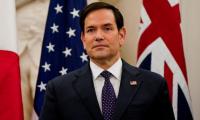For nations to progress in the 21st century and become part of the fourth industrial revolution, they need to link their development policies to the central theme of establishing a strong knowledge-based economy. This requires diversion of national resources to education, science, technology and innovation (ESTI) so that an ecosystem is created where new ideas can be quickly translated into commercial products and processes.
In order for science, technology and innovation to be integrated into the national development plans, a complex series of linkages need to be firmly established across several sectors such as education, research, industry, and the process involves many stakeholders. This requires the formulation of long, medium and short-term vision, strategy and action plans which can only be accomplished under a visionary leadership. It is this leadership that must create and instil the ethos, and inspire the players to transition to a strong knowledge economy so as to ensure transparency and good governance.
It is, therefore, essential that it is the chief executive of the country, the prime minister, who needs to become directly responsible for overseeing the implementation of the ESTI initiatives. The process of preparation of ESTI strategies and their regular review needs to be institutionalised through high-quality policy research institutions that should regularly report on ESTI indicators and monitor the implementation of the ESTI policy.
The preparation of a dynamic ESTI policy and strategy suited to our needs requires regularly undertaking foresight exercises that are aligned to the Sustainable Development Goals (SDGs) and which involve key stakeholders including subject experts, non-government organisations, line ministries and the civil society so that functional innovation systems can be built. I led such a national effort to create a knowledge road map for Pakistan in 2005/2006 and the resulting 320-page document covering 13 key sectors was approved by the cabinet in 2007. However, due to the change of government in 2008 it was never implemented. It is also vitally important that appropriate funding should be made available in our national development plans; the fund should be at least two percent of the GDP.
In order to develop a knowledge economy, a core element is that of institutional reforms. These should be across-the-board – from the judicial system, police, FBR, NAB, FIA, and large national institutions such as Pakistan Steel and PIA to the educational systems and science research institutions – as they are all inter-linked. The ESTI policy will not function when most institutions are corrupt to the core. The reforms are therefore needed to be carried out not just in institutions of higher learning or R&D organisations but also in institutions providing testing, quality and standards-related services, as well as legal and financial institutions.
The private sector plays a critically important role in the research and development, production and export of high technology products. In order for the private sector to become a major player, the government needs to introduce many incentives to facilitate the process. One example of the excellent impact of such incentives is the 15-year tax holiday that I arranged when I was the federal minister of science and technology in 2001 for the IT industry. This has resulted in an over 120-fold growth in IT businesses, from $30 million in 2001 to now $3.2 billion annually.
The absorptive capacity of industry to carry out quality research needs to be enhanced by the government through liberal grants to productively use external and internal knowledge by hiring highly skilled personnel like scientists, engineers, technicians and management consultants. Grants should also be available to industry for building experimental facilities and acquiring sophisticated instrumentation as well as for foreign training of their technical personnel in various fields related to complex manufacturing processes. In this connection, there needs to be particular focus on developing world-class infrastructure for metrology, standards and testing including international standards, international recognition, sound quality systems, prevention of quality defects, long-term cost savings, reduction of waste, increased productivity and access to global markets to facilitate innovation design and compatibility among products
There is reluctance by industry to start new manufacturing units in complex high-technology areas such as biotechnology, nanotechnology, new materials, electronics and others. Through its ESTI policy, the government could encourage risk-taking by firms by assisting in the preparation of business plans, providing risk insurance as well as venture capital for new start-ups. A core National Innovation Revolving Fund of Rs20 billion needs to be established. This should support indigenous technology development both in the public and private sectors. A part of such a fund could be for joint university-industry projects to facilitate sharing of expertise in selected fields. Innovation hubs in the form of technology parks should be set up within university campuses so that young persons with bright ideas can be helped in the establishment of new start-up companies with legal/financial services including professional business plan development. One such good facility has been established in the International Centre for Chemical and Biological Sciences at the University of Karachi.
To transition to a strong knowledge economy, the government must commit sufficient funding to ensure equal access to quality education (to at least six percent of the GDP) and for infrastructure technologies, including ICT technologies, for all. The role of provincial HECs should be confined to improvement of colleges which are currently sorely neglected. This will help remove the present chaos – with three HECs (one federal and two provincial) duplicating each other’s functions in trying to oversee universities. The manner in which we impart education needs to be drastically changed so that problem-solving skills are fully developed. Without improving the quality of our education institutions at primary, secondary, technical and higher levels, we cannot progress.
Pakistan’s real wealth lies in the about 100 million young persons below the age of 20 that we are blessed with. Successive governments of Pakistan have done little but pay lip service to education, science, technology, innovation or high-tech manufacturing. This has resulted in our country being ranked among the lowest in the world in education, science, human development index or poverty. We need visionary leadership in Pakistan, as was found by Korea (General Park), Singapore (Lee Kwan Yew), Malaysia (Mahathir Mohammed) and China (Deng).
A shift to a knowledge economy must be driven from the very top through a visionary and honest leader, backed by a cabinet of the top specialists in the country in their respective disciplines. The transition to a knowledge economy just cannot happen under incompetent and corrupt political leaders.
Concluded
The writer is the former federal minister for science and technology and former chairman of the HEC, and president of the Network of Academies of Science of OIC Countries (NASIC).
Email: ibne_sina@hotmail.com
I presented these proposals which he must have also been briefed about by his ministries
Five people were killed, including one of the guards after being hit over the head with a fire extinguisher
Pakistan has a long way to go in providing equitable digital access to its population of nearly 250 million
Every country has myriad of Marxist factions claiming to be global and universal in nature
We need to look deeper to see if there is indigenous growth model better attuned to aspirations of Pakistani public
Those who wield technology not only change their destiny but alter very definitions of power







